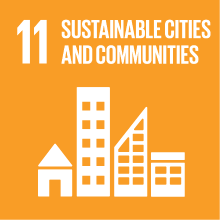ETRUSCOLOGY AND ITALIC ARCHAEOLOGY - II
- Academic year
- 2021/2022 Syllabus of previous years
- Official course title
- ETRUSCOLOGIA E ARCHEOLOGIA ITALICA II
- Course code
- FT0073 (AF:331937 AR:190066)
- Teaching language
- Italian
- Modality
- On campus classes
- ECTS credits
- 6 out of 12 of ETRUSCOLOGY AND ITALIC ARCHAEOLOGY
- Degree level
- Bachelor's Degree Programme
- Academic Discipline
- L-ANT/06
- Period
- 2nd Term
- Moodle
- Go to Moodle page
Contribution of the course to the overall degree programme goals
Objectives of the course are: to develop the ability to think about the dynamics of formation and development of the Etruscan civilization and of ancient Italy, also from different points of view. It aims to provide the methodology for the analysis of archaeological contexts also in comparison one with each other.
Expected learning outcomes
- To know basic archaeological and technical terminology
- To Know Italic chronology relative and absolute
- To know main theoretical models to analize settelments and necropolis
- To Know main theoretical models to analize material culture and social organization
2. Ability to apply knowledge and understanding
- To be able to employ archaeological and technical terminology
- To be able to apply chronological references for the Italic Iron age
- To be able to analyze some case studies for settlements and necropolis
- To be able to analyze examples of material culture and artistic finds
3. Judgment skills
- To be able to judge and argue hypothesis about etrusco-italic contexts
4. Communication skills
- To be able to tell new finds or results of the research with a plain and technical terminology
- to be able to compare themselves with colleagues and tutor, even in virtual way
5. Learning ability
- To be able to take notes and to share them with colleagues, even on line
- To be able to consult bibliographic references even with a critical point of view
Pre-requirements
Contents
The course will focus on the birth and development of the main cities like Bologna -Felsina and Verucchio and on the smaller towns, like Casalecchio di Reno, Rubiera, Imola etc..
All the landscape arond the Po river will be investigated, because they are very important examples of urbanistic and architectonic features in the plain and humid territories.
The course is also based on the comparative analysis of historical and archaeological sources, for the purpose of a coherent and wide-ranging interpretation.
Themes are proposed for attending and not attending. Non-attending students will have to take into consideration the specifically indicated bibliography and will be able to deepen individual topics of their specific interest on request.
Referral texts
L. Malnati, G. Sassatelli, La città e i suoi limiti in Etruria Padana, in La città murata in Etruria. Atti del 25° Convegno di studi etruschi ed italici (Chianciano Terme 2005), PIsa-Roma 2008, pp. 429-469.
E. Govi, L'Etruria padana, in Etruschi. Viaggio nelle terre dei Rasna, Milano 2019, pp. 357-362.
L. Bentini, P. von Eles, Verucchio: una comunità aristocratica tra età del Ferro e orientalizzante, in Etruschi. Viaggio nelle terre dei Rasna, Milano 2019, pp. 363-376.
P. Desantis, A. Gaucci, Spina. La città portuale nelle lagune del Delta padano e il commercio mediterraneo, in Etruschi. Viaggio nelle terre dei Rasna, Milano 2019, pp. 407-418.
R.C. De Marinis, Il Forcello di Bagnolo San Vito (Mantova), testa di ponte degli Etruschi a nord del Po, in Etruschi. Viaggio nelle terre dei Rasna, Milano 2019, pp. 438-442.
E. Govi, Marzabotto. La città fondata, in Etruschi. Viaggio nelle terre dei Rasna, Milano 2019, pp. 443-451.
G. Sassatelli, Bologna Etrusca: le origini e la formazione. La fase villanoviana e l'orientalizzante, in Storia di Bologna, Bologna 2005, pp. 159-156.
L. Bentini, Il deposito di San Francesco, in Storia di Bologna, Bologna 2005, pp. 194-199.
G. Sassatelli, La fase felsinea, Storia di Bologna, Bologna 2005, pp. 235-258
E. Govi, Le necropoli. La struttura sociale e politica, in Storia di Bologna, Bologna 2005, pp. 264-289.
C. Balista, M. Gamba, Le città dei veneti antichi, in Venetkens, catalogo della mostra, Venezia 2013, pp. 67-78.
to learn more and for non-attending students, at least two papers of your choice from:
Etruschi. Viaggio nelle terre dei Rasna, catalogo della Mostra, Milano 2019.
Venetkens. Viaggio nella terra dei Veneti antichi, Venezia, 2013.
Assessment methods
According to the pandemic situation, the text could be on line.
Type of exam
Teaching methods
Lectures and exercises
On.line papers for specific topics.
2030 Agenda for Sustainable Development Goals
This subject deals with topics related to the macro-area "Cities, infrastructure and social capital" and contributes to the achievement of one or more goals of U. N. Agenda for Sustainable Development


